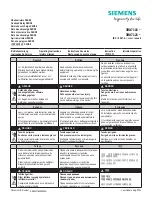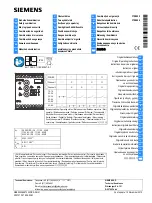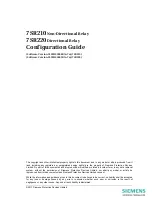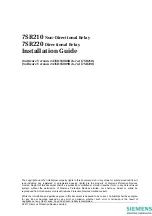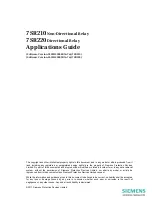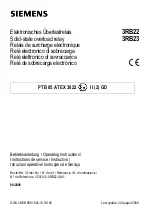
4-26
469 Motor Management Relay
GE Power Management
4.6 S5 THERMAL MODEL
4 SETPOINT PROGRAMMING
4
4.6 S5 THERMAL MODEL
4.6.1 MOTOR THERMAL LIMITS
One of the principle enemies of motor life is heat. When a motor is specified, the purchaser communicates to
the manufacturer what the loading conditions and duty cycle will be, as well as, environment and other perti-
nent information about the driven load such as starting torque, etc. The manufacturer then provides a stock
motor or builds a motor that should have a reasonable life under those conditions.
Motor thermal limits are dictated by the design of both the stator and the rotor. Motors have three modes of
operation: locked rotor or stall (when the rotor is not turning), acceleration (when the rotor is coming up to
speed), and running (when the rotor turns at near synchronous speed). Heating occurs in the motor during
each of these conditions in very distinct ways. Typically, during motor starting, locked rotor and acceleration
conditions, the motor is rotor limited. That is to say that the rotor will approach its thermal limit before the stator.
Under locked rotor conditions, voltage is induced in the rotor at line frequency, 50 or 60 Hz. This voltage
causes a current to flow in the rotor, also at line frequency, and the heat generated (I
2
R) is a function of the
effective rotor resistance. At 50 or 60 Hz, the reactance of the rotor cage causes the current to flow at the outer
edges of the rotor bars. The effective resistance of the rotor is therefore at a maximum during a locked rotor
condition as is rotor heating. When the motor is running at rated speed, the voltage induced in the rotor is at a
low frequency (approximately 1 Hz) and therefore, the effective resistance of the rotor is reduced quite dramat-
ically. During running overloads, the motor thermal limit is typically dictated by stator parameters. Some special
motors might be all stator or all rotor limited. During acceleration, the dynamic nature of the motor slip dictates
that rotor impedance is also dynamic, and a third overload thermal limit characteristic is necessary.
The figure below illustrates typical thermal limit curves. The motor starting characteristic is shown for a high
inertia load at 80% voltage. If the motor started quicker, the distinct characteristics of the thermal limit curves
would not be required and the running overload curve would be joined with locked rotor safe stall times to pro-
duce a single overload curve.
The motor manufacturer should provide a safe stall time or thermal limit curves for any motor they sell. To pro-
gram the 469 for maximum protection, it is necessary to ask for these items when the motor is out for bid.
These thermal limits are intended to be used as guidelines and their definition is not always precise. When
operation of the motor exceeds the thermal limit, the motor insulation does not immediately melt. Rather, the
rate of insulation degradation has reached a point that motor life will be significantly reduced if it is run any
longer in that condition.































